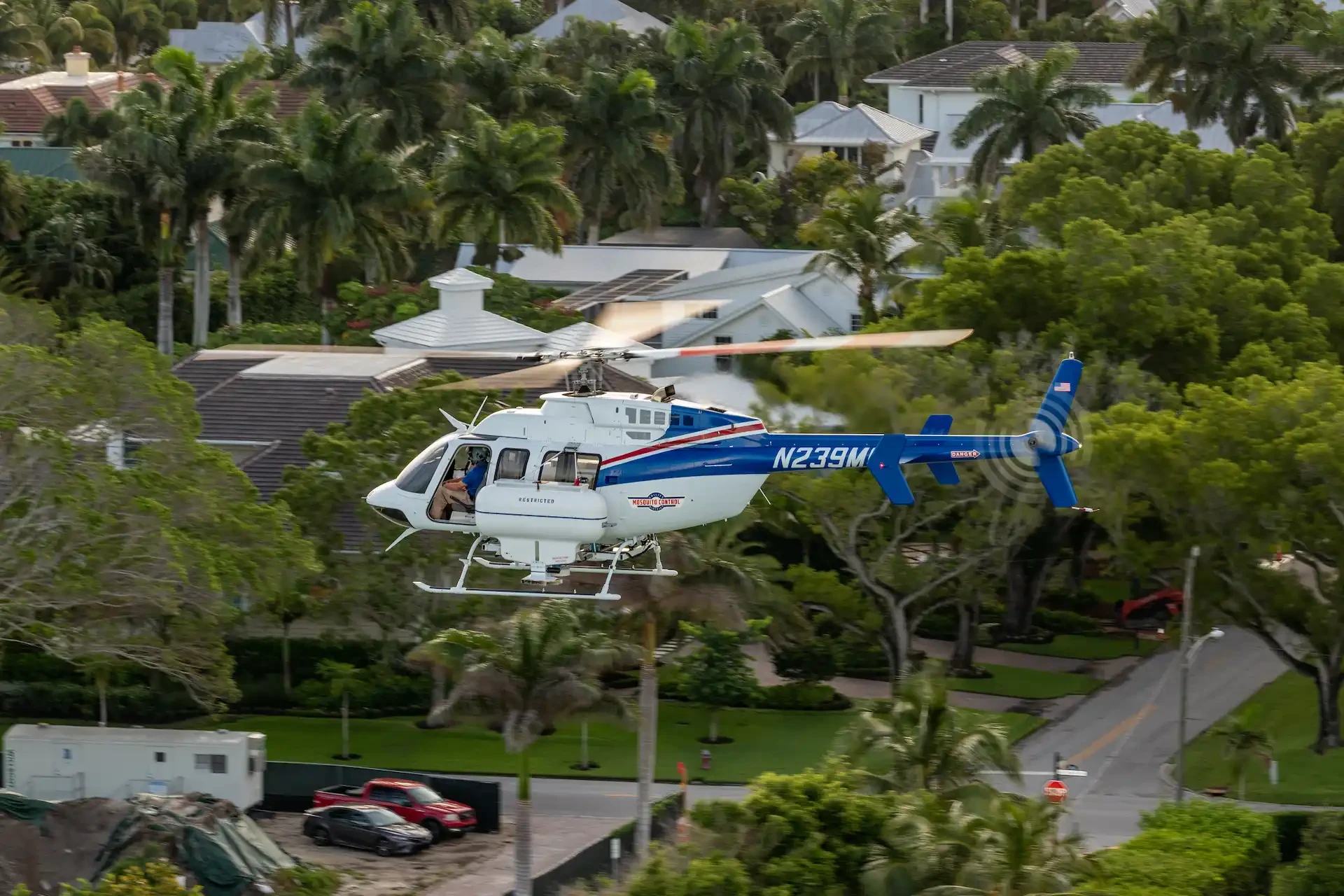Mosquito Squadron? No, not that beautifully sleek wooden De Havilland aircraft from the 1940s, but a mixed fleet of more contemporary fixed and rotary wing aircraft, operated as part of an integrated approach to mosquito control in the Collier Mosquito Control District, in the US state of Florida. Jason Jorgensen visited the district to find out about their operation.
A Land of Insects
Florida. A land of sun, beach life, palm trees and the Everglades that is home to Walt Disney World and the Kennedy Space Center. Oh, and mosquitos. Billions and billions of mosquitos. Southwest Florida’s climate and geography is ideally suited to the insects, and it is home to more than forty species of the biting arthropod pest, all of which are a nuisance and several of which can carry and spread disease to humans and animals. Without some form of control measures, mosquito numbers would make life in the region intolerable, so organizations exist that are dedicated solely to mitigating the effect the insects have on the inhabitants of affected areas. One such body is Collier Mosquito Control District (CMCD) which is an independent special taxing district within the state of Florida. First established in 1950 with an area of just six square miles, the district continues to expand in line with the growth of populated areas and an increased need for control measures. Sitting within the 2,300 square miles of Collier County, the CMCD now comprises 401 square miles and utilizes a range of control methods, products and scientific tools to control the mosquito populations that impact detrimentally on the district’s inhabitants.
Robin King works in CMCD public relations, and she explained that the geography and habitat surrounding the district produces vast numbers of mosquitoes, translating directly to a high demand for control treatment. “You look at what is our little piece, and we're surrounded by habitat, by geography that produces massive amounts of mosquitoes, and we can't do anything but knock them down once they get here. Plus, our population is growing at an exponential rate, with the county commissioners approving new developments located outside of our current district boundaries, where they will essentially be living in a swamp. So, it's going to be valuable for those persons’ public health to be included in the district. That’s the primary reason we're exploring expanding the district boundaries,” she commented. CMCD management is therefore working with individual managers of surrounding lands – mostly under state and federal control – so that some control measures can be carried out beyond the borders of the district, thereby reducing the number of insects that enter. Progress in that regard is slow however, as there is often resistance to the application of pesticides or other control measures, either from those managers or from further up the ‘food-chain’ in their respective organizations. “They hope to persuade individual managers that we can at least larvicide in their areas. The product that we use is a proven treatment, and it has very little off target ramifications. Patrick Linn, CMCD Executive Director, stressed that the district’s mission is first and foremost the protection of public health. “The technology behind what we do – the integrated approach to pest management – is something that's enormously important when we're talking about lands that are formerly taboo for treatment. We may be able to get in there, collect data and exert some control that is environmentally neutral or even friendly,” he elaborated.
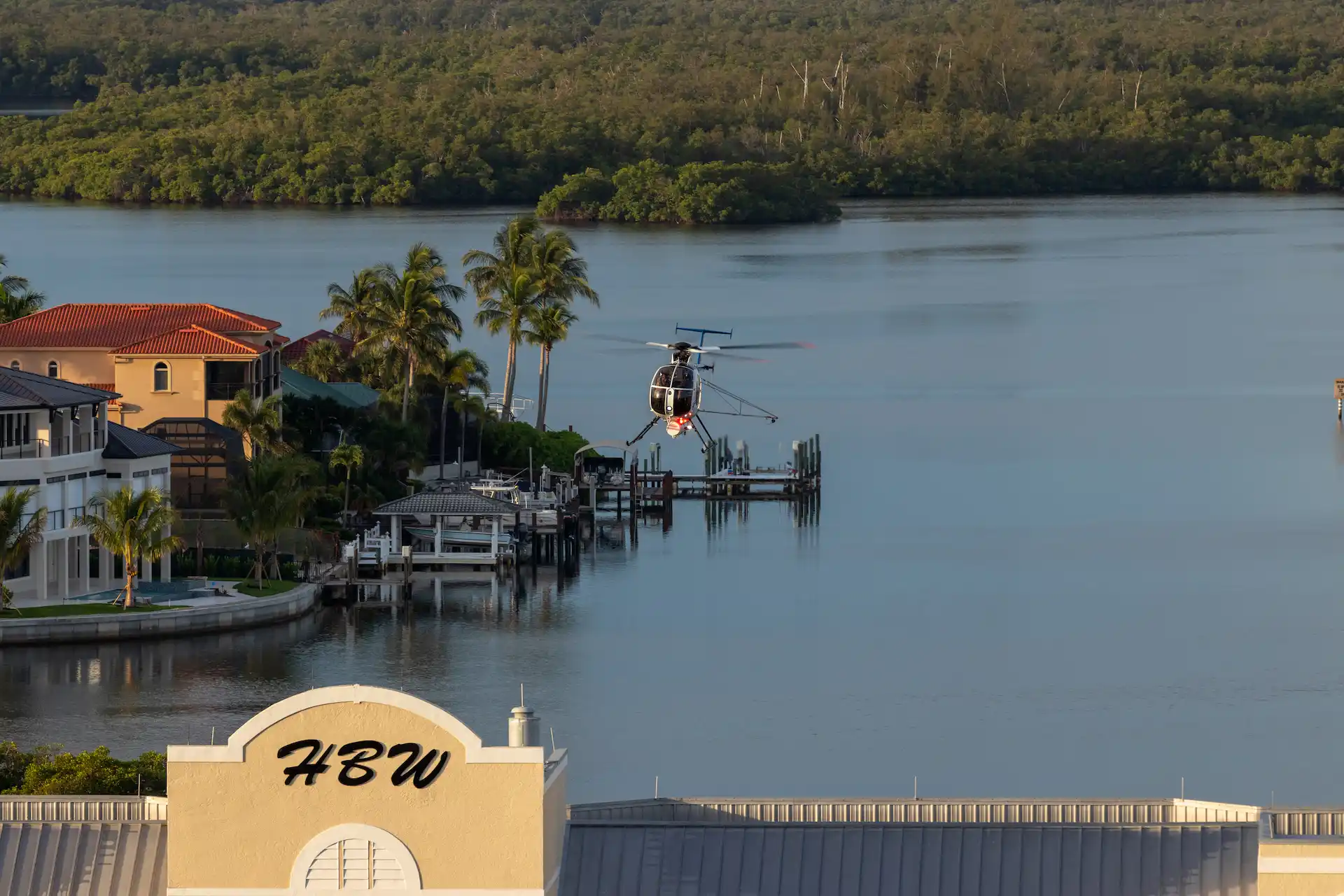
An important component in many of the products used to treat for mosquitos comes from Bacillus thuringiensis israelensis (BTi), a naturally occurring bacteria that produces insecticidal proteins that are toxic to mosquito larvae. It can be extremely expensive though, so Linn described the CMCD’s use of products containing BTi as ‘surgical’. More common and affordable are Pyrethroids; common in many pesticides and, unfortunately, frequently over-used or mis-used, which can lead to genetic mutations and tolerance to the pesticide. “Because our industry is so small, funding for R&D for new products is minimal. Historically, the other classification of chemicals that we've used for many, many years is organophosphates. The active ingredient chemical we use is extremely effective and very cost effective. We are at less than half of the label rate for dosing and see virtually no resistance in mosquitoes, year over year. All of these organophosphates have to undergo reevaluation or recertification every ten years or so. The expectation is that sooner or later, the label is going to become so restrictive that our dosing will not be effective, or the amount of public resistance to its use may grow to be too much. We wish that other agencies and the public realized that the dosing is so very low. We use something called ultra-low volume dosing. In agricultural applications, the same product may be applied at hundreds of times the dose that we apply. And the droplet sizes are only 20 to 40 microns,” Linn elaborated.
Mosquito Threat
The risk to public and animal health from mosquitoes is very real, with the list of diseases that Florida’s mosquitoes can spread include West Nile virus, Eastern Equine Encephalitis, St. Louis encephalitis, dog heartworm, Chikungunya virus, dengue virus, yellow fever virus, Zika virus and malaria. In 1988, adult animals were asphyxiated in the area by large volumes of the swarming insects. To humans, the nuisance factor alone is sufficient to make life at least unpleasant, and sometimes almost intolerable. CMCD’s mission therefore has a major effect on the quality of life for district residents and its aerial fleet is used to dispense a range of liquid and granular products, targeting either the adult or larval stages of the insects’ growth cycle in operations respectively referred to as ‘adulticiding’ or ‘larviciding’. In addition to aerial treatment, the district utilizes ground technicians to apply various control measures and even supplies locally sourced Gambusia or ‘mosquito fish’ to district residents. The hardy Gambusia can tolerate poor quality water and a wide range of temperatures, and although they are only 2 inches in length, they have a large appetite for their favorite food source, mosquito larvae, with adult fish each consuming up to 100 larvae per day.
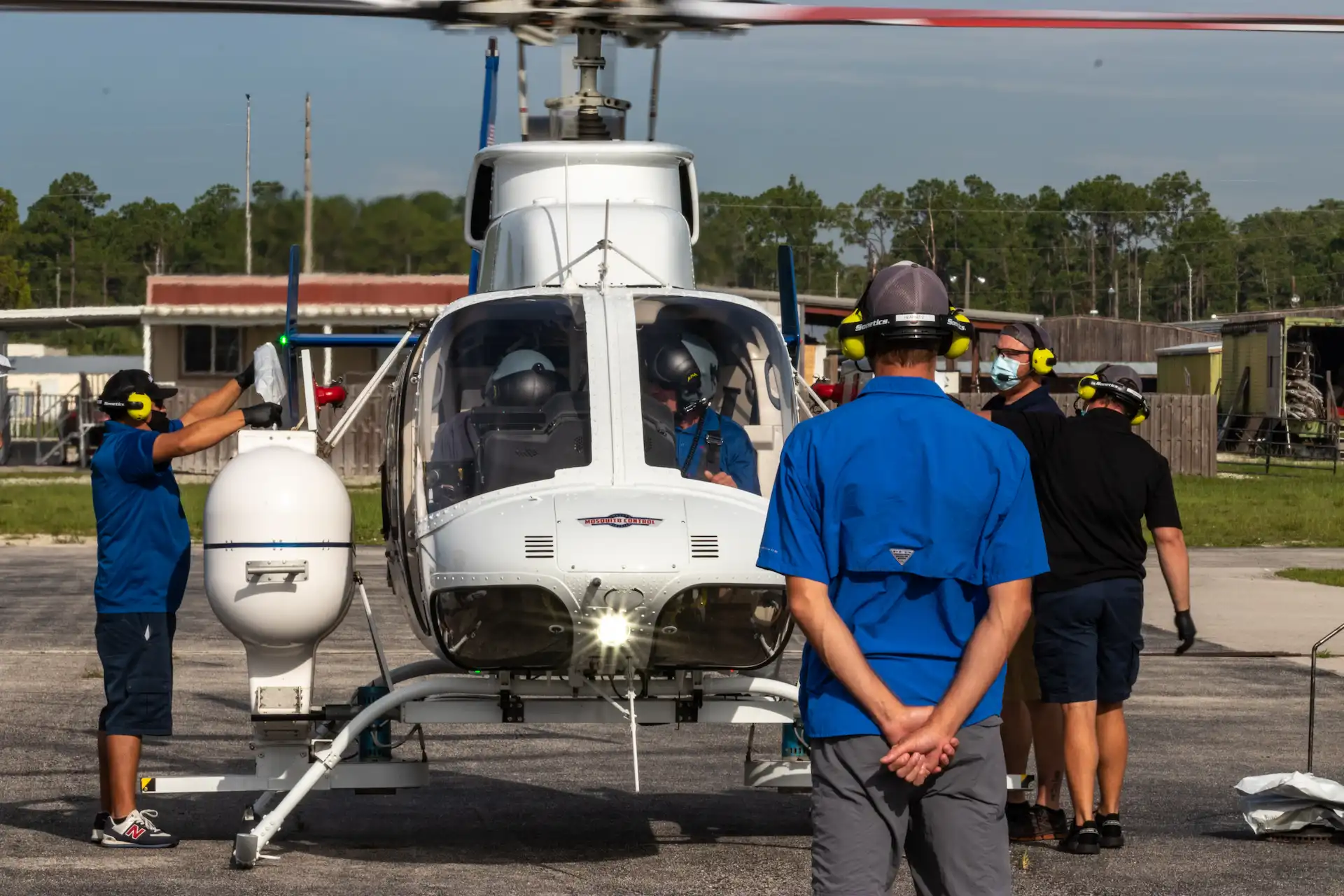
Because so much of the control effort is close to built-up areas and habitation, helicopters are a crucial component of the district’s arsenal. Their maneuverability grants them the ability to dispense treatment over significant acreage near structures and residential locations. Nevertheless, areas immediately adjacent to buildings require even more precise application, so in addition to treatment by ground personnel, the district has begun to utilize drones. Despite their inherent endurance and payload limitations, the drones provide an extremely useful and accurate method of treating sensitive and difficult-to-access areas. “The drone is definitely less intrusive to the public. It's not noisy and most people don't even know it's there,” Laidlaw-Bell remarked. “It's slow if you're doing a bigger area though and they have to change battery packs. It takes a long time to get it done and at some point it's worth doing it with a helicopter, even though you're doing very short runs with a lot of turns.” The drone program is still in its infancy however, and the district is being cautious to not invest too much money in expensive technology not yet proven to be cost-effective, efficient and reliable. “How many pounds of larvicide can a drone dispense? Just 16 or 20; it’s minimal. We are doing it though, and I'd like to think we're doing it smart. Rather than buy a really expensive unit and find that it doesn't work, we’re taking it step by step. Something that could deliver 40 pounds of larvicide or so - that would certainly be useful for cutting-in in areas that we can't do with the helicopters. The drone program's not just for treatment though, it’s also mosquito habitat mapping. We recently put a sensor on and had a company come in and surveil our producing areas with LIDAR, like thermal infrared mapping where they can see areas which are producing from the color gradations, and you know which areas to target. The technology is incredibly impressive and very expensive right now, but eventually it'll come down.”
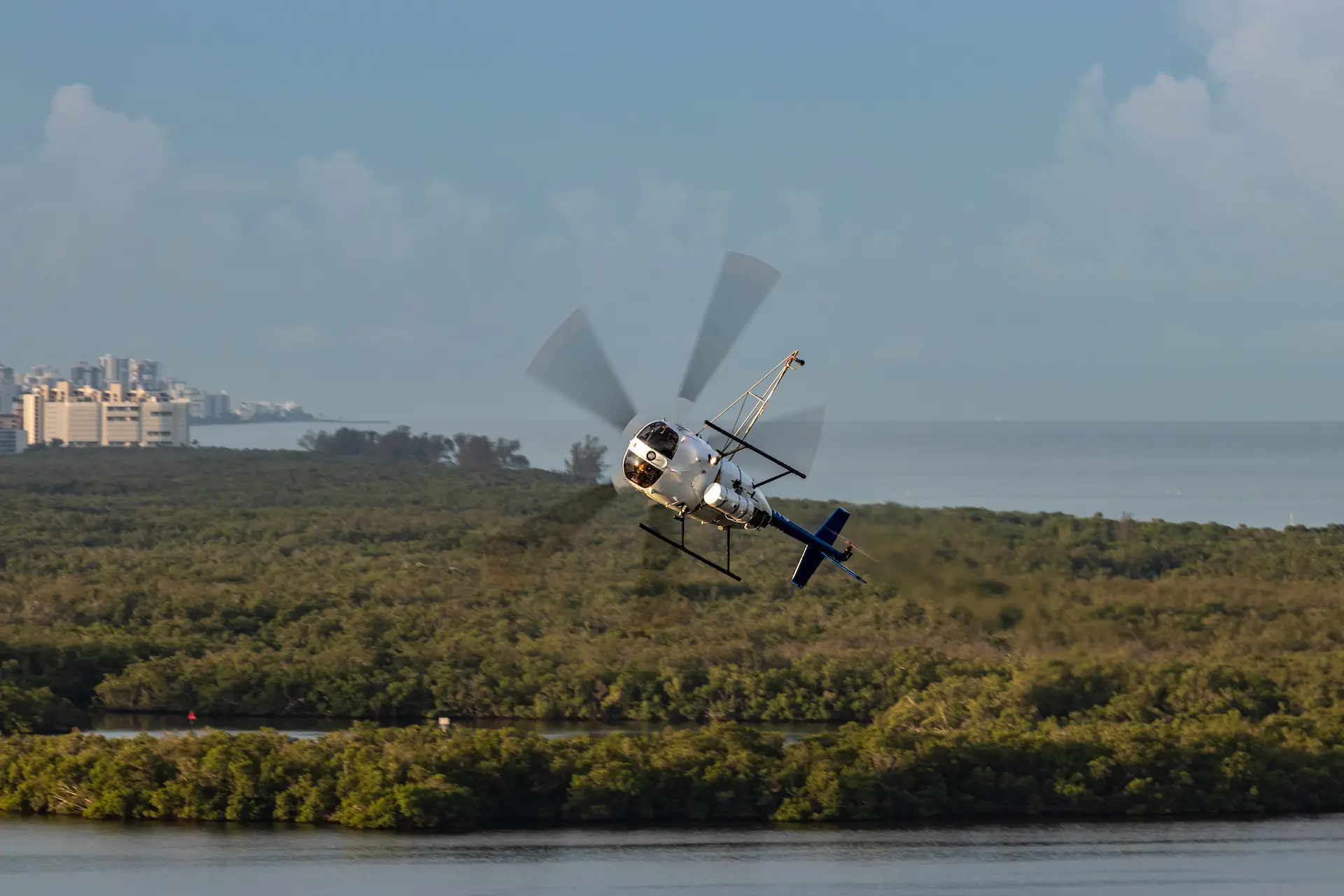
Fleet
The fixed and rotary-wing aircraft fleet is equipped with Ag-Nav navigation systems, specifically designed for aerial spraying and control operations. An area to be treated is mapped and the resulting polygon is entered into the Ag-Nav system, which automatically plots and directs the most efficient flight and drop pattern to effectively treat the area. Because the system is automatic, however, cases where buildings or habitation are in close proximity to the pattern can be slightly problematic. In those instances, the edges of the polygon may be treated by ground personnel, drones or flown manually without Ag-Nav, and the remaining untreated area re-mapped and the amended polygon then flown at the direction of the Ag-Nav system. Although a manual option is available for the Ag-Nav units, at this stage CMCD has not invested in the software upgrade to include it in the fleet. CMCD pilot Mike Berkitsch pointed out that another benefit of the Ag-Nav system is that in the event of an incident or complaint, the technology and automation can provide a report of the pilots actions “On the printouts you can see exactly the speed, the altitude and everything you did. You can produce that to show and prove that all rules and regulations were followed” he commented.
The district operates MD500s and a Bell 407, with each type having its own strengths for the CMCD mission. Unsurprisingly for the iconic type, the flying qualities of the diminutive MD500 series are highly regarded by the CMCD pilots. Berkitsch described the 500’s lack of hydraulically assisted controls as more ‘workmanlike’ than the 407, with the machine having to be actively flown all the time. “You have to really kind of muscle the ship around but that's the nature of the game, and it has a shorter tail, so you have to work the pedals a little more to keep on the spray run. When you turn around though, the 500 turns on a dime and you get nine cents back, so she really kicks around. Flying through the turns you don't need a lot of pedal input and do it mostly with cyclic only, but it does take a little finesse,” he opined, then continuing. “Once the bigger 407’s on the line, it stays on it much easier. The hydraulics help a lot and you can just fly with two fingers and let her run, although you may do little corrections with the pedals to stay on your line. The turn is very different though, because the aircraft is almost double the weight and by its nature is built to go fast. She tends to drop the nose a little bit on top of the turn once you slow down and you have to fly it more actively through the turn. The turns are definitely a little tougher in the bigger machine.” Laidlaw-Bell agreed with Berkitsch and added, “When we’re larviciding, the swathes are 60ft and you can do pedal turns in the 500 beautifully. Because it's only a 60ft transition to the next run you put the thing up towards the vertical, maybe forty to fifty degrees and just boot the torque pedals. Like Mike says, it just turns on a dime and flies nicely down. You don't really have to manage power but if you've got a headwind or a tailwind you have to watch it or you can find yourself descending into a vortex ring state. If you've got the thing in trim, it's actually very responsive and everybody loves the 500. The inertia of the 407 or any other bigger helicopter keeps it on track pretty nicely, but the turn requires active work, so you've got to get the muscle memory for it, or you can find out you’re rather ham-fisted.” Adulticiding swathes are much wider, at 350ft, so the turn technique is more like a wing-over in a fixed-wing aircraft, according to Laidlaw-Bell.
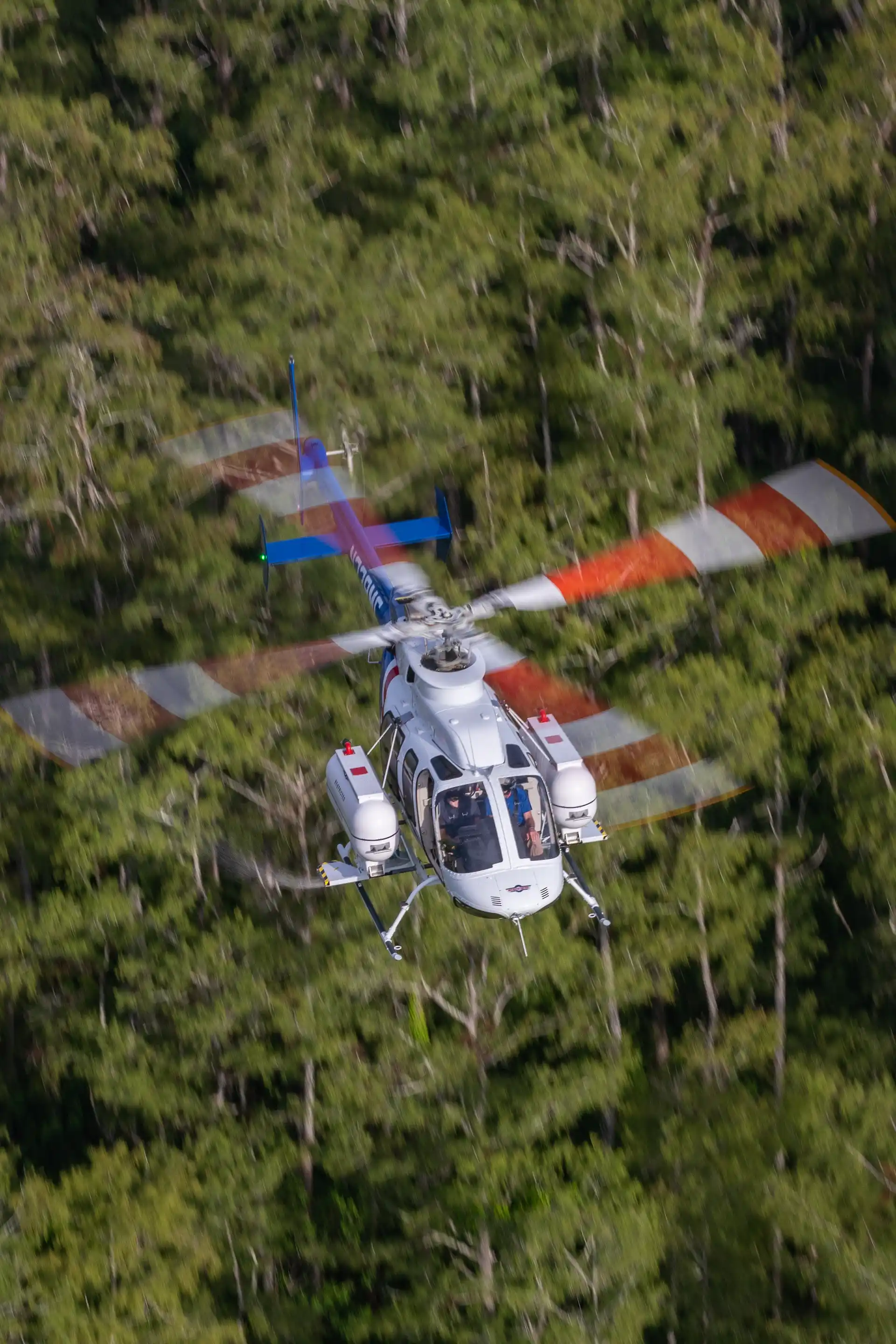
Time spent in turns is unproductive and the size or shape of a polygon determines the minimum non-spraying time, which means doing punchy turns and accurate, tight flying. It could be expected that the 407 – or any other helicopter in that larger class – would have a substantial payload increase over the 500 but that has not been the case for CMCD’s operation. The capacity for slung loads is notably greater but the usable internal load – and the hoppers are considered an internal load – is little different. “You might have noticed the size of those side tanks on the 407, they're huge. But we use less than half of the total volume because we’re weight limited, with a tradeoff between load, fuel and pilot weight,” Laidlaw-Bell advised. “There are some swamp areas we do that are surrounded by high rises and that's a real limitation in the 407, because no matter how aggressively you fly it, it's not as maneuverable as the 500. You can really throw that thing around, be close to buildings and still be safe but with the 407, you've got to stand back a little bit.” The fleet is undergoing a gradual process of full fleet revitalization and Linn estimates that three fixed wing and a combination of three or four helicopters will be able to get the job done, meet the district‘s mission, and accommodate new products as they come down the pipeline. “We are very fortunate that we've had a supportive board,” he remarked. “When I started making noise as the director several years ago that we needed investment, they listened. We put together a plan and it's being executed. I couldn't be happier with the way that things are going with our aircraft, because we have a complement of pilots, maintenance staff and a director of maintenance that are second to none.”
Laidlaw-Bell has been doing mosquito control for 20 years and reported that everybody on the CMCD crews loves to fly. “It might seem very repetitive what we're doing, whether it's fixed wing or helicopter flying, but we don't have any autopilot and it's entirely hand flying so you can get to be as good as you want to be. And yeah, it can be very risky single engine stuff. If the engine quits while larviciding, it's basically in the hands of God and you’d better o the right procedures,” he said. All operations are dual pilot and Berkitsch observed that the night vision goggles limit peripheral vision, necessitating that the pilot turns their head much more. Laidlaw-Bell added, “It's only about a 30-to-40-degree field of view and, at least on the right side, when you turn your head, you're banging your goggles off the pillar or the canopy. The NVGs are focused on infinity so you also have to look beneath the goggles to check your speed and the direction of the swath. It's actually much more intense.” He also advised that IR illuminators are soon to be added to the fleet to aid night operations. “It’s essentially an IR floodlight with about 170-degree coverage and it doesn't blind the public because it's IR and they can't see it. But it's like flying in daytime for us, although you still have to move your head.”
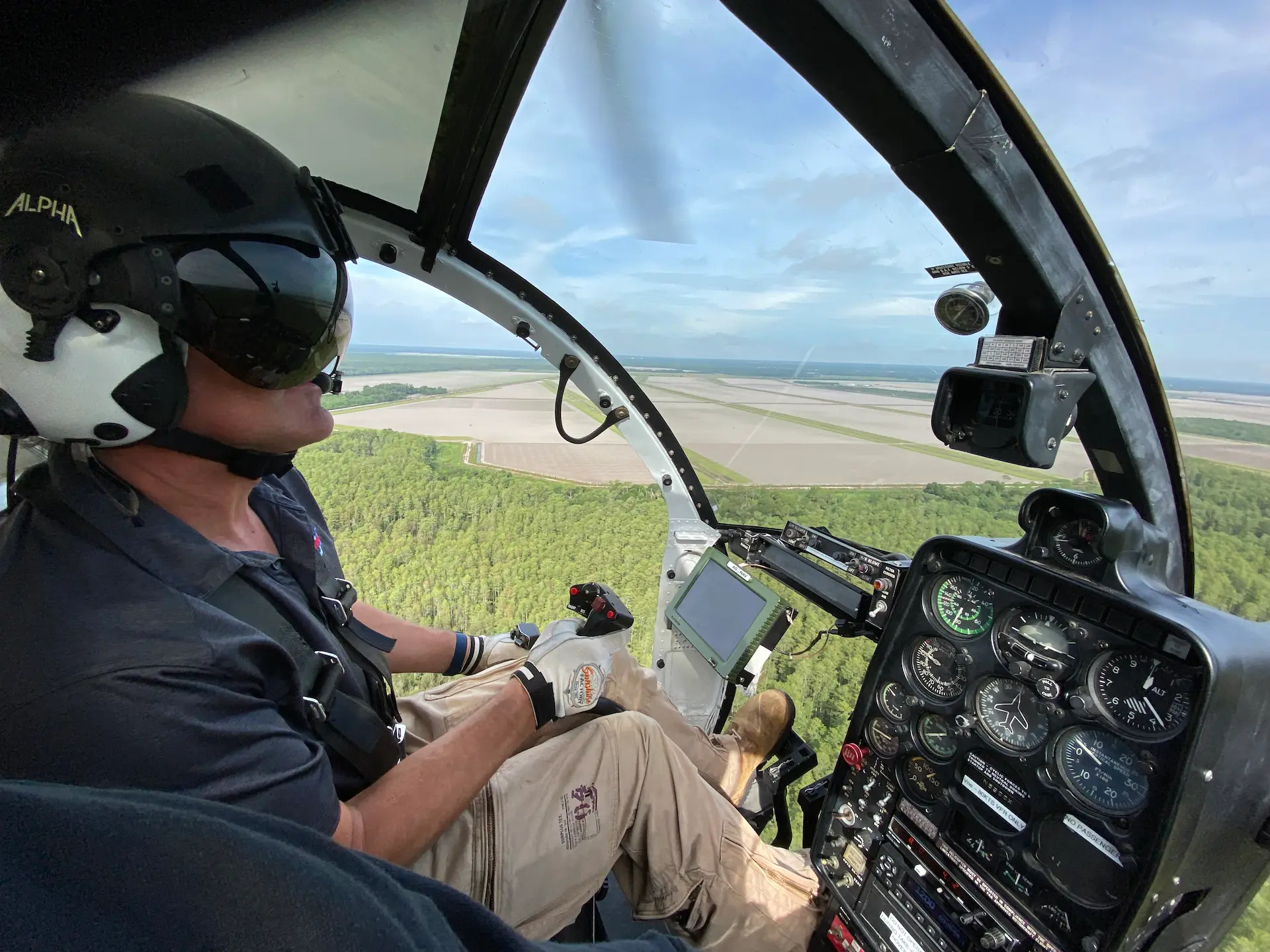
Complaints
Operations do generate complaints but generally from people unfamiliar with mosquito control operations. Although noise complaints are few, the proximity of the aircraft to Joe citizen can be a frightening surprise to people from elsewhere who are holidaying in Florida or waiting out Covid in the area. Laidlaw-Bell explained that Florida doesn't require the district to produce maps of what they do. “All the regulatory authority wants to know is where we put it, how much we put on and basic stuff like that. But we started keeping records because if there are complaints then we can show citizens exactly what transpired, which often dispels inaccurate public perception. ” Few people realize the extent of scientific research and analysis behind the district’s operations. Extensive trapping is conducted to monitor mosquito species and numbers, with the CMCD an early industry adopter of the Biogents Sentinel (BG) trap; fielding 27 of the devices that incorporate circuitry to count every instance of a mosquito entering the trap and transmit device reports to the monitoring department every fifteen minutes. CDC mosquito traps, gravid traps are also used and one trap recently collected just over 25,000 mosquitoes in only two nights. Several years ago, a single trap collected more than 80,000 mosquitoes in a single night and Linn stated that the mosquito production figure where there is water lettuce sits between seven and ten million insects per month, per acre. Technicians conduct landing rate counts, using the simple but effective exposed forearm as a landing area and counting the number of mosquitoes alighting on it in a given time period. The district now even runs its own laboratory, eliminating delays in waiting for samples to be analysed elsewhere, to someone else’s priorities.
A fleet of trucks can conduct ground larviciding treatment and includes a Buffalo Turbine – a sprayer that can project the larval control material mist several hundred feet into the air; perfect for mosquito treatment around and among houses and commented that the type of mosquito the district is after dictates the necessity of being the mother of invention. “A lot of these techniques, a lot of the technologies, the methodologies and the products are proven in the field,” he said. “When we have dense housing with a lot of potential for standing water, either in bromeliads and natural form or in artificial or human made forms, we can get this larvicide in there a few hundred feet and it works nicely. And we can do it almost continuously, calling in air support when necessary. The best practice involves interrupting a life cycle through larvicide and knocking down the adults whenever you have them. We find that if we almost continuously larvicide from the ground during the months when we have those mosquitoes that we see fewer and fewer adult Aedes Aegypti. And that is our sort of hyper-local best practice.” Illustrating the importance placed on control of the larval mosquito form, King pointed out that CMCD larviciding efforts have increased by over 1,700 percent in the last five years.
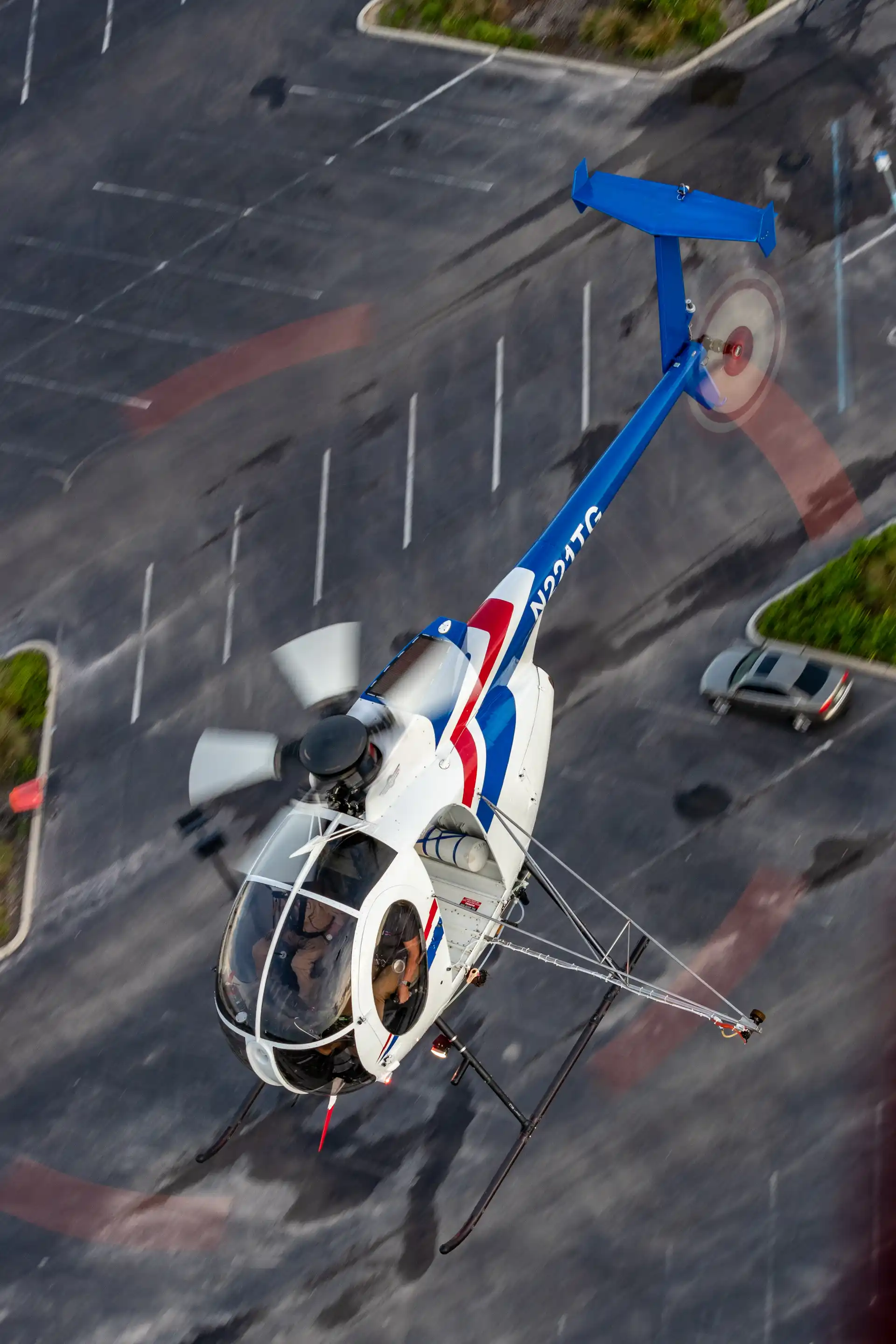
District operations are not run on a schedule and that is something that King wishes the public better understood. The treatment work is carried out as driven by the collected data, ensuring it is targeted to be most effective. In an effort to better inform the public and in the interests of institutional transparency, the district has established a comprehensive and user-friendly website with a wide range of information and links for CMCD services. Additionally, education programs are promoted to local schools. “We've looked at the state standards for education, and looked for those opportunities where we can say, Hmm, you're talking about insects? What's the difference between an insect and an animal? Let's use a mosquito as an example, because everyone here can relate to it,” King elaborated. “We work with the education system, and before the pandemic, we reached about 4,000 students in one year. Now we're working on subsequent grade levels, and we can talk about the lifecycle of the mosquito as it relates to water. We're moving into middle school and high school now. As an example, they use fruit flies in one of their lesson plans, but we can use mosquitoes instead. It's a very relatable topic so the more that we can get in there and talk about mosquitoes, our geography and the health threat that they pose, the more it all starts fitting together, and people gain a broader understanding of why we do what we do. It is fair to say that Naples and Collier County wouldn't be on the map if it weren't for mosquito control, and air conditioning.
Note: CMCD is mourning the loss of their Chief Pilot Chris Laidlaw-Bell, who passed away shortly before this story was published. For more than two decades, he gave freely of his time and passion for the District’s mission, even as his health waned. He was a fine chief pilot, colleague, and friend who is terribly missed.
 HOME
HOME


